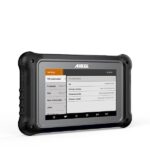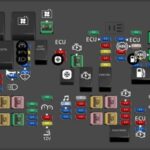For car enthusiasts and owners of classic vehicles, understanding the diagnostic systems is crucial for maintenance and repair. When it comes to 1992 vehicles, the term “OBD2” often comes up, but it’s essential to clarify the technology available at that time, especially for specific makes like Subaru. Let’s delve into the on-board diagnostic system of 1992 Subarus and understand how it differs from later standards.
Subaru’s Unique OBD System (1986-1994): Pre-OBD2 Simplicity
The 1986 to 1994 Subaru models, while equipped with an on-board diagnostic (OBD) system, did not feature the American OBD I or the standardized OBD II that became mandatory in 1996. Instead, Subaru developed its own in-house OBD system. This system, present in models of that era, is distinct and notably different from what is typically understood as OBD I in American vehicles. It’s important to recognize that “92 Obd2” in the context of these Subarus is a misnomer, as OBD2 was not yet implemented.
How Subaru’s Diagnostic System Works: Simplicity and Effectiveness
The beauty of the Subaru OBD system from this period lies in its simplicity and effectiveness for troubleshooting. Unlike the more complex systems that followed, the Subaru system is remarkably user-friendly. Diagnosing issues involves a straightforward procedure: connecting two wires and observing the ECU (Engine Control Unit) light. This light flashes in patterns, and by counting these flashes, you can decipher error codes. These codes are then cross-referenced with an error code chart to pinpoint the problem area. This system is lauded for being both useful and effective in identifying vehicle malfunctions, without needing sophisticated scanning tools.
The Dealer Plug: Clearing Up Misconceptions
There’s often mention of a connector or “dealer plug” in these older Subarus. It’s crucial to understand that this plug is not designed for the kind of comprehensive diagnostic scanning associated with OBD II. Instead, this dealer plug serves a more limited function, primarily for verifying basic sensor operations, such as the Crank Angle Sensor (CAS). Its utility is quite restricted, so much so that even the Factory Service Manual (FSM), intended as a dealer’s primary reference tool, provides minimal information on its usage. Tools to extensively read the ECU data from this era are exceptionally rare, and even functionalities like ECU reflashing were not dealer-level options, requiring factory intervention in Japan.
ECU Technology: A Glimpse into the Past
Interestingly, the technology within the ECU of models like the Loyale, GL, and DL from this period shares a surprising similarity with the processor of the Apple II computer. This comparison gives perspective on the computing power managing the engine functions at that time. While not as advanced as modern systems, it was a significant step in engine management technology.
Conclusion: Appreciating Subaru’s Diagnostic Approach
In summary, while the term “92 OBD2” might be casually used, it’s technically inaccurate for describing the diagnostic system in 1992 Subarus. These vehicles utilized a unique, pre-OBD2 system that is characterized by its simplicity and effectiveness. Understanding this distinction is key for anyone working on or maintaining these classic Subaru models. The system, though basic by today’s standards, provided a valuable and accessible way to troubleshoot issues, highlighting Subaru’s practical approach to vehicle diagnostics in that era.

